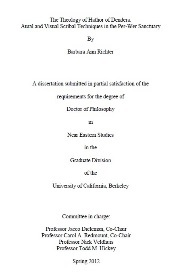| Main » Ad Board » ДРЕВЕН ЕГИПЕТ И АФРИКА » Религия и философия |
| 21.10.2020, 16:03 | |
В Древен Египет Хатхор е една от най-почитаните богини. Затова аспектите на нейните същност и проявления са множество и най-разнообразни, като намират своето място както в митовете и ритуалите, така и в храмовата украса и епиграфика. В това изследване се прави опит за формулиране на три основни направления в теологията на Хатхор: като съзидателка и слънчево божество, като трансцедентален образ и идеята за фараона като посредник между нея и хората. Материал за проучването дават изобилните надписи в Пер-Уер - основното светилище на храмовия комплекс в Дендера, построен през епохата на Птолемеите. - на английски език, от Berkeley Library - University of California, формат PDF.Свалянето става с десен бутон (downloading by right button) и Save as... АЛТЕРНАТИВЕН ЛИНК / ALTERNATIVE LINK: - на английски език, от E-Sholarship, формат PDF.Сваляне с ляв бутон (downloading by left button) и после през бутона Download. АЛТЕРНАТИВЕН ЛИНК / ALTERNATIVE LINK: - на английски език, от Google Drive, формат PDF. Сваляне с ляв бутон (downloading by left button) от страницата на предоставящия сървър, после през бутона стрелка надолу/after by down arrow button.
| |
| Views: 848 | Placed till: 21.11.2020 | Rating: 0.0/0 | |

